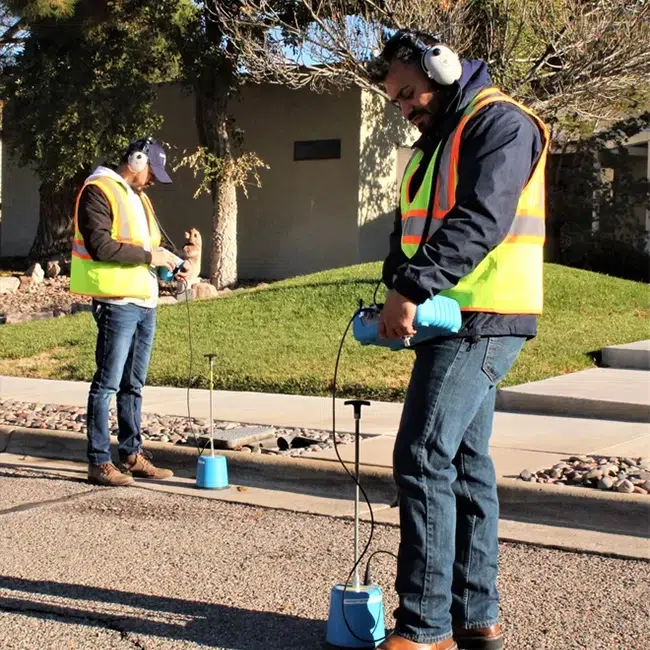The Value of Regular Water Leak Detection for Long-Term Home Defense
Cutting-edge Solutions for Early Detection of Water Leakages in Structures and Facilities
From cutting-edge leak discovery technologies to the implementation of IoT sensors for real-time tracking, the landscape of leakage prevention is progressing swiftly. Automated water circulation evaluation systems are improving just how leakages are recognized and resolved, paving the way for a positive method to water leak discovery.
Advanced Leakage Detection Technologies
Advanced leak detection technologies, equipped with sophisticated sensing units and formulas, play a crucial role in swiftly identifying and determining water leakages in different settings. These innovations use a mix of acoustic, thermal, and electro-magnetic noticing techniques to discover leaks accurately. Acoustic sensing units discover the noise of leaving water, enabling precise localization of the leakage source. Thermal imaging spots temperature adjustments caused by water leak, offering another reliable method for leakage identification. Electromagnetic sensors can recognize adjustments in magnetic fields caused by water, supplying yet one more layer of leakage discovery capability.

IoT Sensors for Real-Time Surveillance
In the realm of modern water leak discovery, the assimilation of IoT sensing units for real-time monitoring represents an essential innovation in enhancing proactive leak detection abilities. These sensing units use constant surveillance of water supply, giving real-time data on water circulation prices, pressure variations, and temperature changes. By leveraging IoT innovation, these sensors can find also the tiniest abnormalities in water use patterns, making it possible for very early recognition of possible leakages prior to they intensify into significant problems.
IoT sensing units transmit information to a central system, where innovative formulas analyze the information and create signals or notifications when irregularities are detected. This real-time monitoring capacity permits home proprietors or center supervisors to without delay resolve leakages, lessening water damage, lowering repair service expenses, and preserving water sources.
Additionally, IoT sensors can be incorporated with structure management systems, allowing for computerized actions to identified leaks, such as closing off water valves or activating pumps to minimize the effect of leaks. On the whole, the execution of IoT sensing units for real-time surveillance dramatically improves the effectiveness and effectiveness of water leakage detection in buildings and framework.
Artificial Intelligence Algorithms for Leak Forecast

One key benefit of using artificial intelligence for leak forecast is its capability to constantly find out and enhance its accuracy with time. As more information is gathered and fed right into the algorithm, it can refine its predictions and adjust to altering problems, inevitably boosting the reliability of leakage detection systems.
In addition, equipment discovering algorithms can help in determining subtle indications of leaks that may go unnoticed by traditional tracking techniques. water leak detection. By analyzing complicated data collections in real-time, these formulas can offer very early cautions and notifies, allowing for timely treatment and precautionary upkeep to reduce possible water damage and linked expenses
Making Use Of Thermal Imaging for Leak Discovery
Thermal imaging modern technology offers an appealing technique for identifying water leakages in find out here numerous systems and frameworks. By utilizing infrared radiation and temperature level differences, thermal imaging electronic cameras can recognize hidden leakages that are not conveniently noticeable to the naked eye.
Among the essential advantages of thermal imaging for leakage detection is its non-intrusive nature. Unlike typical approaches that may call for breaking right into wall surfaces or floorings to find leakages, thermal imaging enables for non-destructive screening. This not just saves time and minimizes expenses however likewise reduces interruption to the structure or framework being analyzed. In addition, thermal imaging can promptly check big areas, offering a comprehensive summary of possible leakage resources in a timely fashion. Generally, using thermal imaging technology boosts the efficiency and accuracy of water leakage discovery, making it a useful device for preserving the integrity of structures and facilities.
Automated Water Flow Evaluation Solutions
Just how can automatic water flow evaluation systems revolutionize the discovery and monitoring of leaks in numerous systems and you could try this out facilities? Automated water circulation analysis systems offer an aggressive technique to leak discovery by constantly keeping an eye on water circulation rates and patterns. By developing standard data, these systems can promptly determine inconsistencies that may suggest a leakage, enabling timely treatment to protect against considerable damage.
These systems make use of sophisticated algorithms to assess real-time data and supply prompt notifies when abnormalities are detected, enabling for speedy action to be taken. Additionally, automatic water circulation evaluation systems can be integrated with building monitoring systems or IoT platforms, improving total efficiency and enabling remote tracking abilities.
Furthermore, the data collected by these systems can be made use of for anticipating maintenance functions, assisting to recognize possible powerlessness in the facilities prior to leakages occur. Overall, the implementation of automated water circulation evaluation systems can dramatically boost leakage discovery and administration methods, eventually resulting in cost financial savings, lowered water wastefulness, and raised sustainability in structures and framework.

Conclusion
In verdict, the integration of advanced leak detection modern technologies, IoT sensing units, artificial intelligence algorithms, thermal imaging, and automatic water official statement circulation evaluation systems offers innovative solutions for early detection of water leakages in structures and infrastructure. These technologies enable real-time surveillance, forecast of leakages, and effective discovery techniques to avoid water damage and wastage. Implementing these solutions can help in keeping the honesty and sustainability of water supply in different setups.